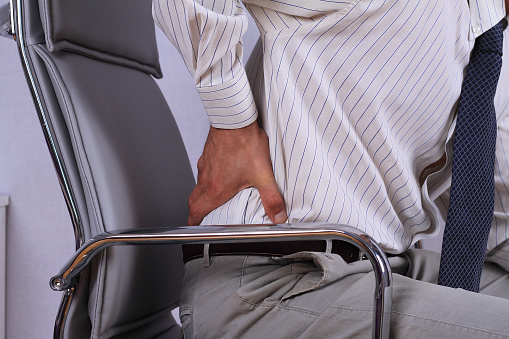- Providing Helpful Healthcare Products Since 1999 | Our Hours: 8 AM - 5 PM CST Mon - Fri
- +1-877-750-0376
Back Pain Prevention

Type 2 Diabetes—The Silent Killer
November 20, 2017
Atrial Fibrillation
January 18, 2018Causes. Prevention. Treatment.
If you are like most American adults, more than likely you have experienced some type of lower back pain, spasms or just general discomfort. In fact, according to the Mayo Clinic, approximately 80% of all Americans will have low back pain at least once in their lives.[1] In addition, most of those people will range in ages from 35-55 years old.
There are several reasons why back pain occurs. Oftentimes, it can be linked to the actual structure of the body, such as bulging, ruptured or herniated disks, arthritis, an abnormal curvature of the spine or osteoporosis, to name a few. Upper back pain can be due to spinal inflammation or other more serious issues such as infection or shingles. Some older people always get injured, even you could end up throwing out your back and you could end up in really bad pain.
The most common reason for back pain is from strained muscles and ligaments that often leads to painful muscle spasms—lifting objects that are too heavy or improper or awkward movements of your body is usually the culprit for this type of lower back injury. One can also suffer from back pain due to a bad mattress, standing for longer than normal periods of time, poor posture or sitting improperly in a chair.
Back pain or injury can be side stepped by trying to avoid some of the following:
- Leading a sedentary lifestyle
- Being overweight
- Smoking
- Improper physical exercise and overstretching
Fortunately, most back issues will resolve itself with proper rest and home treatment for the inflammation; this includes over the counter pain relievers, hot compresses or ice packs. Unfortunately, if you are someone who suffers from acute back pain, a doctor will have to determine what will best help to alleviate your pain; the recommendation could range from prescription medications for short periods of time to periodic cortisone shots or even surgery—there are, however, several modalities, treatments and disciplines for post management of symptoms.
Back pain treatments do not have to involve medications:
Physical Therapy: This includes the application of heat/ice, ultrasound therapy that helps soft tissue or improving posture through various techniques.
CBT (cognitive behavioral therapy): This type of therapy helps to manage your thoughts; the way one thinks, can help one cope with pain. Relaxation techniques are also incorporated into this type of therapy.
Chiropractic Care: The treatment of the muscles, joints and bones with the main focus on the spine.
Shiatsu: Uses finger, thumb and elbow pressure that is applied along ‘energy lines’ in the body.
Acupuncture: This modality involves the use of the insertion of fine needles into precise points on the body—it helps to release its own endorphins, acting as a natural painkiller.
Yoga: Certain practices of yoga help to stretch and strengthen back muscles–this can be accomplished through specific poses, movements and breathing exercises.
Lower Your Risk for Back Pain:
- Exercise regularly—exercising builds strength and helps keep weight at a healthy level; strengthening your core helps to minimize these risks.
- Maintain good posture—if you sit a lot, make sure your chair provides you with plenty of lumbar support, sit upright and maintain a good head position, as well.
- Check your driving posture—be sure to adjust your mirrors to avoid getting into a twisted position; your seat should be comfortable, allowing you to sit upright, avoiding the driver slouch!
- Lift objects properly—lift from your legs NOT your back. This is one of the most common mistakes people make that often results in back injury.
- Use the right pillow—use a pillow that complements the positioning of your neck to avoid the chances of sustaining upper and lower back pain.
- Don’t underestimate the importance of a good mattress—you will want your spine to remain straight while lying down for extended periods of time.
[1] Medicalnewstoday.com

